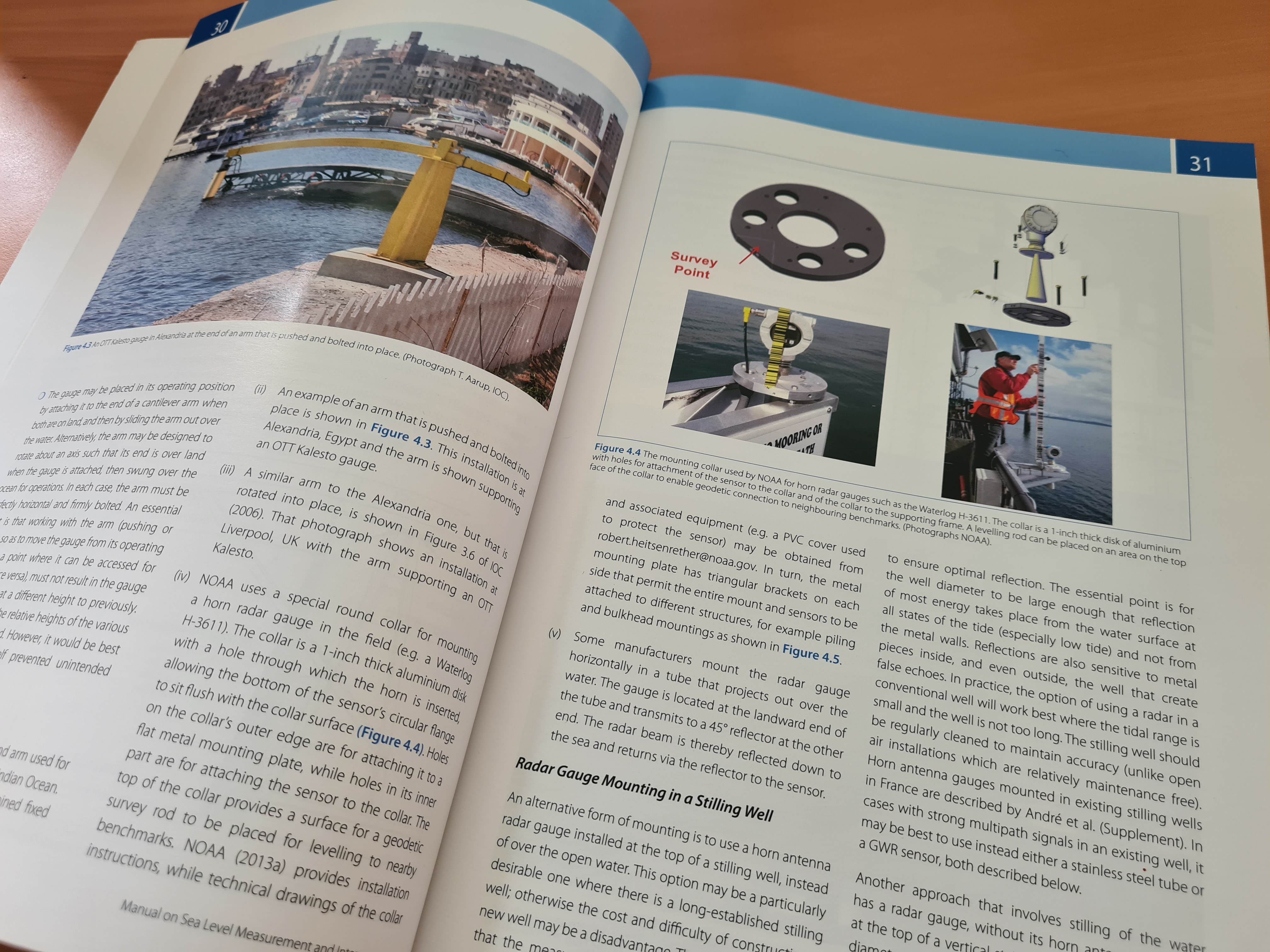
Filtrer les publications
Cloud-based near real-time sea level monitoring using GNSS reflectometry
In addition to traditional tide gauges, the ground-based global navigation satellite system reflectometry (GNSS-R) that utilizes signal-to-noise ratio data from a single GNSS receiver has become another promising alternative for sea level monitoring. However, its application is limited by retrieval precision, especially in large tidal variation environments. On the other hand, previous studies have focused on performance improvement by using post-processing strategies, which cannot support practical (near-) real-time applications.
Z. Liu, L. Du, P. Zhou, X. Wang, Z. Zhang, Z. Liu
GPS Solutions, volume 27, article 65
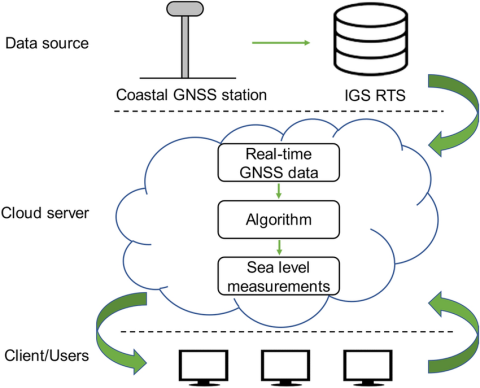
Combination of Tsoft and ET34-ANA-V80 software for the preprocessing and analysis of tide gauge data in French Polynesia
Since 2008 a network of five sea-level monitoring stations was progressively installed in French Polynesia. The stations are autonomous and data, collected at a sampling rate of 1 or 2 min, are not only recorded locally, but also transferred in real time by a radio-link to the NOAA through the GOES satellite. The new ET34-ANA-V80 version of ETERNA, initially developed for Earth Tides analysis, is now able to analyze ocean tides records.
B. Ducarme, J.-P. Barriot, F. Zhang
Geodesy and Geodynamics, volume 14
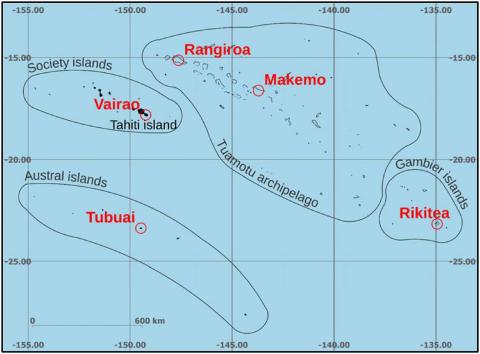
Seiches à l’échelle de baies : origines et identification des périodes propres d’oscillations à partir des données d’observations sur le long terme en Provence à partir du réseau HTM-NET
L’étude présentée sur les oscillations résonantes dans des bassins semi-ouverts de la côte provençale est basée sur l’analyse des données de niveaux issus de stations du réseau d’observation HTM-NET, composées de deux capteurs piézométriques, l’un immergé et l’autre émergé, permettant de connaitre la pression atmosphérique, le niveau d’eau et la température avec une période d’échantillonnage de 2 min. Elle concerne les baies de La Ciotat, de Sanary, la Rade de Toulon (grande et petite rades), le Golfe de Giens et la Rade d’Hyères.
V. Rey , C. Paugam, C. Dufresne, D. Mallarino, T. Missamou, J.-L. Fuda
Paralia - XVIIèmes Journées Nationales Génie Côtier – Génie Civil, Chatou
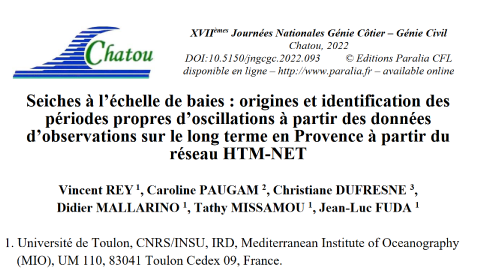
Sea level changes: the data available at the PSMSL and SONEL and the results of satellite altimetry
Sea level changes are a complex and quite discussed topic in the media, mostly because of their relationship with “climate change”. The first instruments to evaluate sea level changes are the Tide Gauges (TG) that began to register data in 1700, at Amsterdam. The TG registrations are validated and homogenized, to be comparable, by PSMSL (Permanent Service for Mean Sea Level). The longest record is the one in Brest (France) that begins in 1807. They register the Relative Sea Level (RSL). In fact, the data show that the vertical movements on the continent strongly affect the RSL curves.
M. A. Araújo
Research Square - Preprint
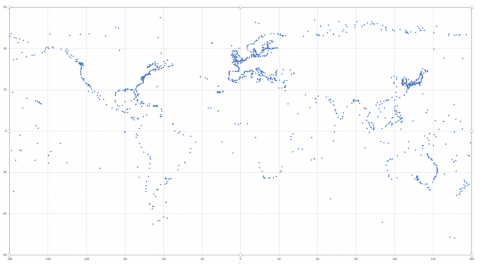
Data rescue process in the context of sea level reconstructions: An overview of the methodology, lessons learned, up-to-date best practices and recommendations
Coastal water level measurements represent one of the earliest geophysical measurements and allow an assessment of historical sea level rise and trends in tides, river flow and storm surge. However, recovery and digitization of archival tidal records have been much less widespread and systematic than, for example meteorological records. In this contribution, we discuss data rescue efforts and lessons learned in France, the United States and the United Kingdom, countries with early and extensive tide gauge networks by the mid-19th century.
A. Latapy, Y. Ferret, L. Testut, S. Talke, T. Aarup, F. Pons, G. Jan, E. Bradshaw, N. Pouvreau
Geoscience Data Journal, volume 10
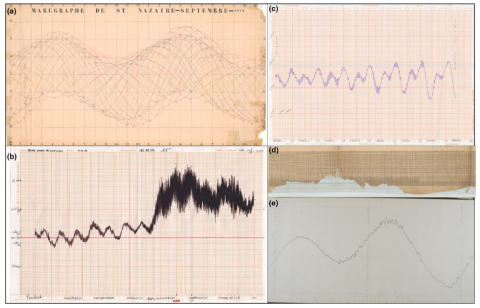
Apport de l'imagerie satellitaire pour l'identification et la cartographie des habitats littoraux de Mayotte soumis à une subsidence rapide
L’île de Mayotte (canal du Mozambique), offre une grande diversité de littoraux influencés par son vaste complexe récifo-lagonaire. Ces habitats (plages, platiers coralliens, herbiers, mangroves…) remplissent des fonctions écologiques reconnues : protection contre l’érosion côtière, consommation du CO2 atmosphérique, zone critique de biodiversité.
A. Aubry, A. Tempere
Paralia - XVIIèmes Journées Nationales Génie Côtier – Génie Civil, Chatou

Etude de l'impact d'une tempête extrême sur la Grande Plage de Biarritz en présence d'une digue amovible en sacs de sable
La Grande Plage de Biarritz a connu plusieurs événements de tempêtes extrêmes ces dernières décennies qui ont causé d’importants dégâts matériels sur les ouvrages et bâtiments situés en front de mer. Ces événements ont conduit à la mise en place d’une stratégie de protection des infrastructures et des usagers qui intègre notamment le déploiement d’une digue amovible en sacs de sable sur le perré situé en haut de plage.
M. Rozki, D. Morichon, M. Delpey, V. Roeber, S. Abadie
Paralia - XVIIèmes Journées Nationales Génie Côtier – Génie Civil, Chatou
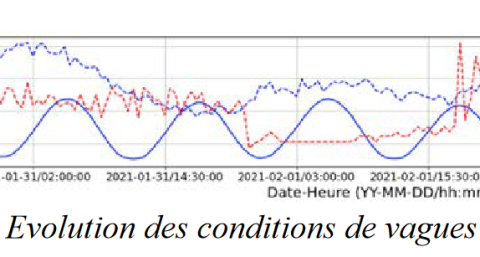
Bayesian networks to predict storm impact using data from both monitoring networks and statistical learning methods
Bayesian networks are probabilistic graphical models that are increasingly used to translate hydraulic boundary conditions during storm events into onshore hazards. However, comprehensive databases that are representative of the extreme and episodic nature of storms are needed to train the Bayesian networks. Such databases do not exist for many sites and many Bayesian networks are trained on data generated by process-based models. To our knowledge, they have not been trained exclusively on observational data for storm impact modeling.
A. Callens, D. Morichon, B. Liquet
Natural Hazards, volume 115
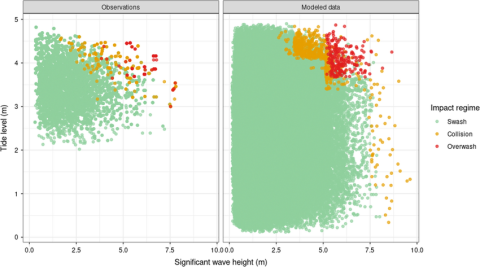
A database for sea-level monitoring in French Polynesia
This article presents a curated database of the sea-level measurements acquired by the network of the five geodetic tide gauges managed over French Polynesia by the Geodesy Observatory of Tahiti from 13 June 2009 to 28 January 2021.
J.-P. Barriot, F. Zhang, B. Ducarme, G. Wöppelmann, G. André, A. Gabillon
Geoscience Data Journal, volume 10
